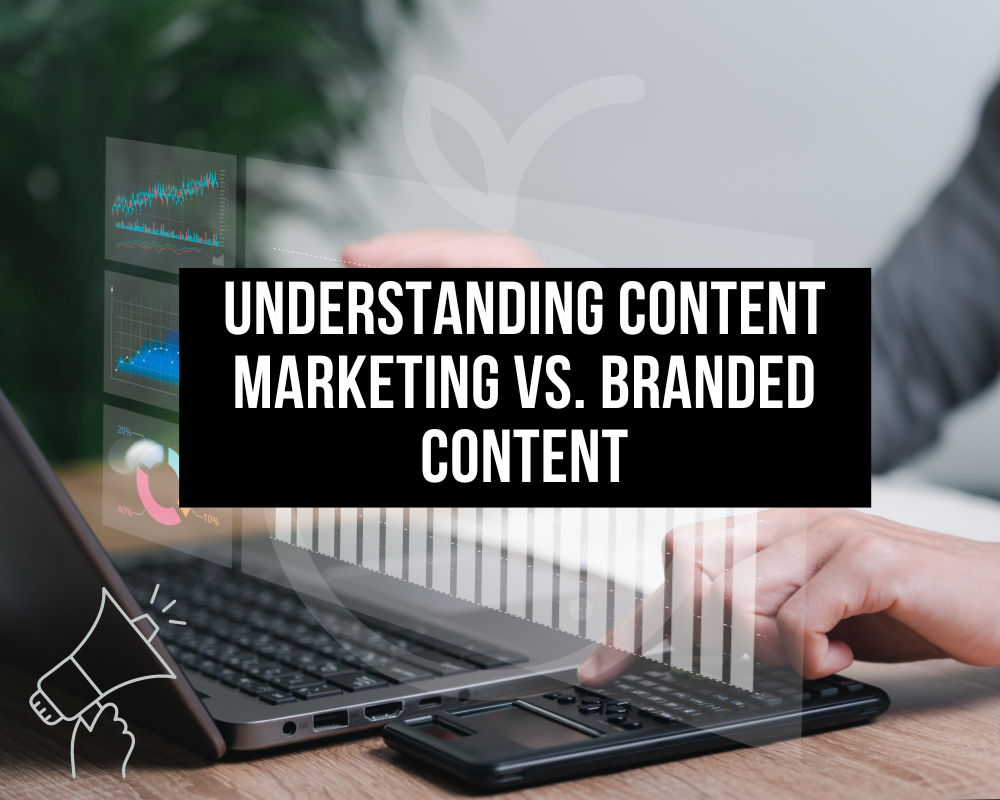Content marketing and branded content are two outstanding strategies used to achieve this intention. While they percentage common goals, they fluctuate in method, purpose, and execution. Understanding the nuances among those strategies is important for crafting powerful marketing campaigns. Let’s delve deeper into the differences between content advertising and branded content.
1. Defining Content Marketing and Branded Content
Content Marketing
Content advertising revolves around the introduction and distribution of valuable, relevant, and consistent content to draw and preserve a described audience. The primary recognition is on presenting statistics, enjoyment, or training that resonates with the audience’s pastimes and desires. Content marketing goals are to construct brand consciousness, set up credibility, and ultimately force profitable purchaser action.

Branded Content
Branded content, however, is content that is explicitly produced or subsidized by using an emblem. Unlike traditional advertising, branded content searches to engage audiences through imparting enjoyment or software whilst subtly promoting the brand’s merchandise or values. It blurs the strains between advertising and content creation, aiming to foster a deeper reference to clients through turning in proper and significant experiences.
2. Purpose and Objectives
Content Marketing
The number one reason for content marketing is to draw and nurture a devoted target market by delivering valuable content that addresses their pain points, hobbies, or aspirations. Through strategic content advent and distribution, corporations intend to establish idea leadership, power natural visitors, and cultivate long-term relationships with clients. Content advertising specializes in building trust and authority, which does not directly lead to extended emblem recognition and patron loyalty.
Branded Content
Branded content serves a greater direct promotional reason by integrating the brand’s messaging or values into the content narrative. While it aims to entertain or interact with audiences, its last aim is to enhance brand visibility, have an effect on purchaser perceptions, and pressure specific brand-related consequences such as product income or emblem advocacy. Branded content regularly leverages storytelling and immersive experiences to create memorable interactions that resonate with the target market.
3. Content Format and Delivery
Content Marketing
Content advertising features an extensive variety of codes and channels tailor-made to fulfill various target audience alternatives and consumption conduct. This includes weblog posts, articles, carousel posts, infographics, podcasts, social media posts, email newsletters, and more. The key is to deliver content continuously across a couple of touchpoints, optimizing every piece for maximum attainment and engagement. Content advertising strategies frequently prioritize natural visibility and shareability, leveraging SEO, social media, and content syndication to increase attain.
Branded Content
Branded content emphasizes creativity and innovation in content format and shipping to captivate audiences and differentiate the brand from the competition. This might also involve collaborations with influencers, partnerships with media stores, or the introduction of immersive brand reports together with interactive video games or digital fact stories. Branded content is regularly tailor-made to precise systems or contexts to ensure relevance and resonance with the audience.
Read: SEO For WordPress in 2024: 6 Vital Tips for Enhanced Performance
4. Authenticity and Transparency
Content Marketing
Authenticity and transparency are foundational standards of content advertising. Successful content advertising and marketing campaigns prioritize honesty, integrity, and genuine price advent over advertising or sales pitches. The consciousness is on building meaningful connections with audiences based on mutual trust and recognition. Content marketers attempt to set up credibility by turning in top-notch, informative, and independent content that addresses target market desires without hidden agendas.
Branded Content
While branded content aims to entertain or interact with audiences, it has to hold a delicate balance between brand integration and storytelling authenticity. Audiences are more and more wary of overtly promotional content and might quickly disengage if they understand manufacturers as insincere or manipulative. Effective branded content seamlessly weaves the brand’s message or values into the narrative without disrupting the target market’s enjoyment. Transparency approximately the emblem’s involvement is important to keep belief and credibility.
5. Measurement and Evaluation
Content Marketing
Content advertising and marketing success is measured via an aggregate of qualitative and quantitative metrics that reflect target market engagement, brand visibility, and business outcomes. Key performance indicators (KPIs) may also include website visitors, social media engagement, email open prices, lead era, conversion quotes, and patron retention. Content entrepreneurs use analytics tools and data evaluation to performance, optimize content strategies, and demonstrate ROI to stakeholders.
Branded Content
Measuring the effectiveness of branded content entails assessing both brand-associated metrics and content engagement metrics. While traditional emblem metrics which include brand cognizance, emblem belief, and purchase motive are important indicators of achievement, branded content additionally relies on content material-precise metrics which include perspectives, stocks, likes, remarks, and sentiment analysis. By analyzing these metrics, brands can evaluate the effect of their branded content campaigns and refine their techniques accordingly.
Conclusion
In conclusion, content marketing and branded content are complementary but awesome strategies for enticing audiences and promoting brands in the digital panorama. Content advertising makes a specialty of turning in price-pushed content to build relationships and foster trust with audiences, at the same time as branded content integrates the brand’s message or values into creative narratives to force specific brand-associated outcomes. By knowing the nuances between these techniques and aligning them with enterprise goals, brands can create impactful advertising campaigns that resonate with their target audience and drive long-term achievement.



